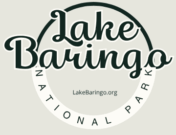A Journey Through Rift Valley Earth Science and Scenic Beauty
🌍 Overview: Where Earth History Comes Alive
Lake Baringo, located in Kenya’s northern Rift Valley, is a scenic and geologically dynamic destination. Surrounded by volcanic hills, escarpments, fault lines, and geothermal features, the lake offers a window into the tectonic and volcanic forces that shaped East Africa’s landscape.
Its unique topography not only influences the biodiversity and ecosystems around the lake but also makes it a natural classroom for understanding geology, hydrology, and climate change.
🔥 Geological Origins: Part of the Great Rift Valley
What is the Great Rift Valley?
The Great Rift Valley is a massive geological trench stretching over 6,000 km from Lebanon to Mozambique. In Kenya, it splits the country from north to south, forming a chain of lakes, volcanoes, and escarpments.
How Was Lake Baringo Formed?
- Tectonic Movement: Lake Baringo lies in a graben—a sunken block of land between two parallel faults, formed as the African tectonic plate split.
- Volcanic Activity: Surrounding ridges and islands are the result of ancient volcanic eruptions. Ol Kokwe Island, for example, is volcanic in origin.
- Subsidence & Sedimentation: The lake basin was gradually filled with sediments carried by rivers and shaped by erosion over time.
⛏️ Age Estimate: The lake basin likely formed between 1–3 million years ago, although the exact age is still studied.
🏞️ Physical Geography: Features of the Landscape
| Feature | Description |
|---|---|
| Lake Basin | A shallow freshwater lake, average depth 5–7 m, expanding during rainy years |
| Volcanic Islands | Includes Ol Kokwe, Samatian, and several smaller islets |
| Tugen Hills (West) | Composed of ancient metamorphic and volcanic rocks, rising over 1,800 m |
| Laikipia Escarpment (East) | Steep, scenic rise forming dramatic views and raptor habitats |
| Lava Fields & Basalt Ridges | Evidence of past volcanic flows on the lake’s western shores |
| Hot Springs & Geysers | Found on nearby Ol Kokwe Island and in the neighboring Lake Bogoria basin |
💧 Hydrology and Water System
Lake Baringo is one of only two freshwater lakes in the Rift Valley (the other being Lake Naivasha).
Inflows:
- Rivers: Molo, Perkerra, Ol Arabel
- Seasonal streams: Feed into the lake from surrounding hills
Outflow:
- No surface outlet – the lake is endorheic, losing water only through evaporation and subsurface seepage
Rising Water Levels:
- Since 2010, the lake’s area has increased dramatically (from ~130 km² to over 200 km² in some years), submerging:
- Homes
- Schools
- Lodges
- Roads
- The cause is a combination of:
- Tectonic uplift/subsidence
- Increased rainfall
- Land-use changes and catchment degradation
🌊 Some formerly dry land is now permanently submerged, changing the lake’s shape and ecosystem.
🏝️ Ol Kokwe Island: A Volcanic Relic
This island, a prominent feature in the middle of Lake Baringo, is actually a partially eroded volcanic cone.
- Features:
- Hot springs and fumaroles
- Steaming geothermal pools
- Traditional Pokot communities
- Significance:
- Offers direct evidence of the lake’s volcanic origin
- A hotspot for geological field trips and boat excursions
🧬 Tugen Hills: Cradle of Humanity
Located on the western side of the lake, the Tugen Hills are famous not just for their rugged beauty, but also for their paleontological significance.
- Orrorin tugenensis: One of the oldest known human ancestors (~6 million years old) was discovered here.
- Composed of gneiss, schists, and volcanic deposits
- Offers insights into:
- Early mammal evolution
- Rift Valley geology
- Landscape evolution over millions of years
🌋 Geological Highlights & Points of Interest
| Location | Geological Feature |
|---|---|
| Ol Kokwe Island | Volcanic cone, hot springs, fault lines |
| Tugen Hills | Fossil beds, ancient uplifted basement rocks |
| Laikipia Escarpment | Rift wall with sedimentary layering |
| Kampi ya Samaki | Shoreline sediment buildup and lava boulders |
| Ruko Conservancy | Mixed geological zones with wildlife and fossils |
📸 Scenic Highlights for Visitors
- Cliff viewpoints for sunrise and raptor spotting
- Lava plateaus that make excellent hiking terrain
- Lake-edge wetlands with papyrus and fig trees rooted in sediment-rich soils
- Cultural-geological tours on Ol Kokwe Island
- Boat rides for viewing submerged tree lines and changing water levels
⚠️ Environmental Changes and Geological Impacts
- Flooding and tectonic shift theories suggest that ongoing land movement may be causing uneven lake expansion
- Loss of shoreline ecosystems, such as nesting areas for birds and crocodiles
- Submerged infrastructure, which continues to challenge tourism, schools, and local livelihoods
Scientists continue to study the hydro-geological behavior of the lake to understand and predict future changes.
🔬 Why the Geology of Lake Baringo Matters
- It reveals Earth’s tectonic story in one of the most active rift zones on the planet.
- It supports freshwater biodiversity rare in the Rift Valley.
- It’s tied to human origins via fossil discoveries in the Tugen Hills.
- It affects conservation planning, tourism infrastructure, and livelihoods.
- It creates one of Kenya’s most photogenic and dynamic landscapes.
🧭 Summary: A Living Laboratory of Earth’s History
Lake Baringo’s geology and landscape are more than just beautiful—they are living evidence of Earth’s evolution, from prehistoric rift formation to modern ecological shifts. Whether you’re hiking ancient hills, soaking in hot springs, or watching a fish eagle dive into tectonic waters, every inch of this lake tells a story that is millions of years in the making.
🪨 Lake Baringo isn’t just a lake. It’s a story written in stone, steam, and shifting water.
